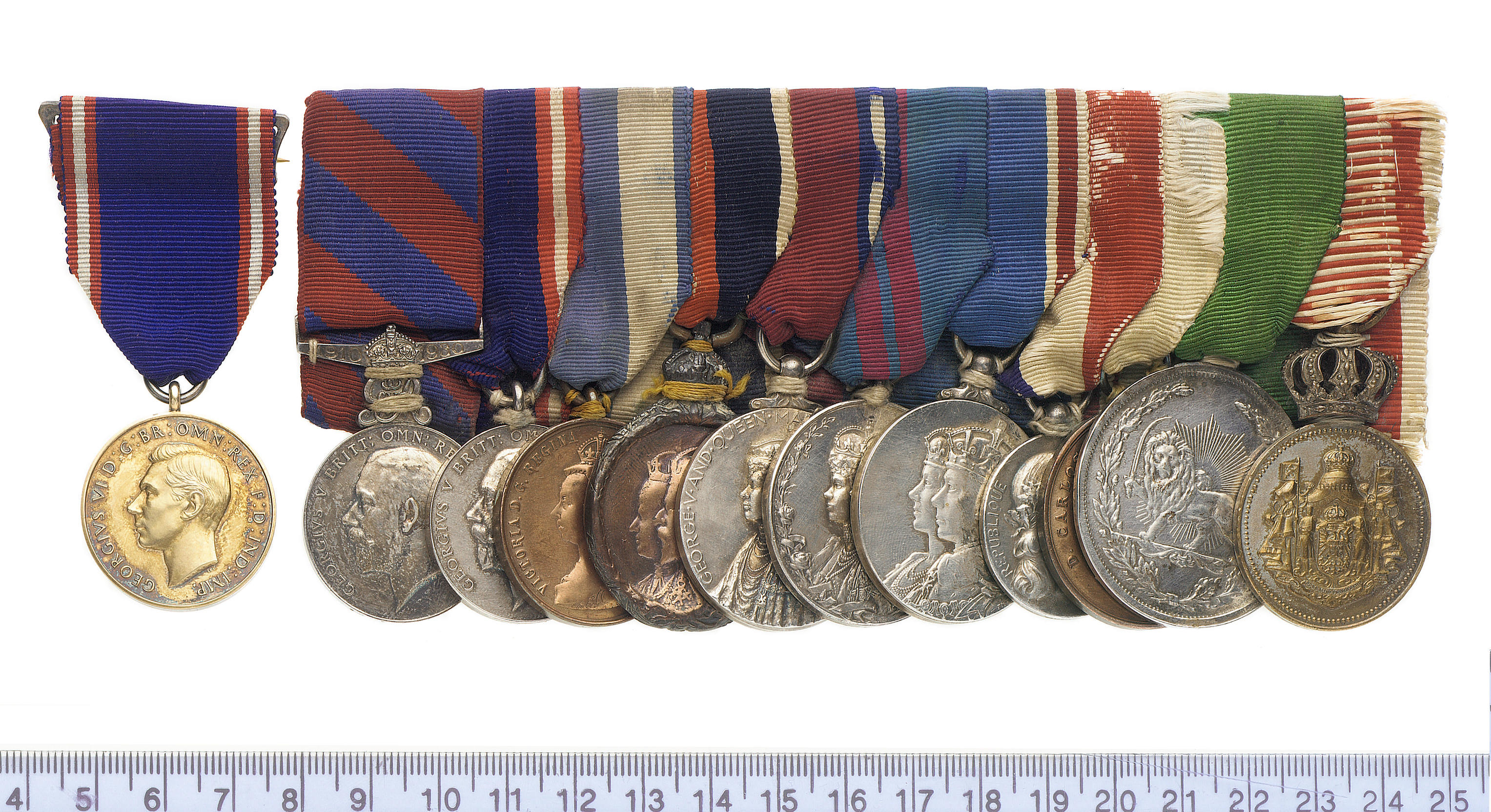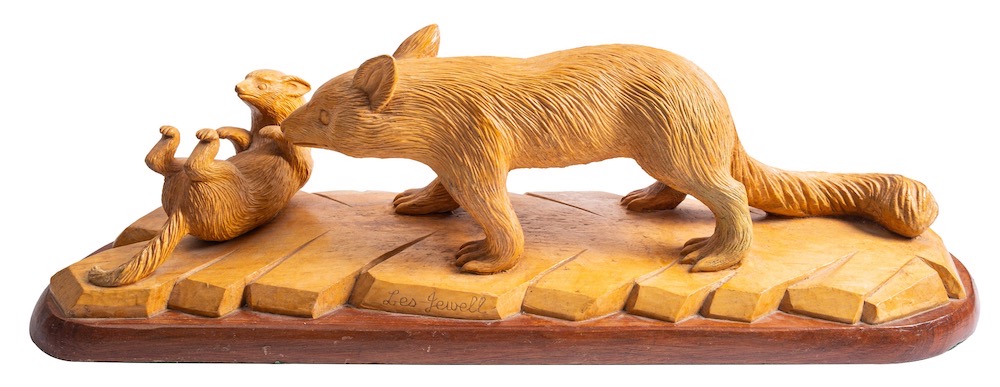The mounted group of eight miniature dress medals attributed to Sir Edward Richard Henry, Bt., G.C.V.O., K.C.B., C.S.I., Commissioner of the Metropolitan Police, Royal Victorian Order, silver-gilt and enamel; Order of the Bath, Civil Division, silver-gilt, ring suspension; Order of the Star of India, gold, silver and enamel, with a cameo centre, complete with gold top bar; Coronation 1902, silver; Coronation 1902, Metropolitan Police issue, silver; Coronation 1911, silver; Queen’s South Africa 1899-1902, no clasp; King’s Police Medal, E.VII.R., silver, mounted as worn, in case, first with slight enamel damage, otherwise nearly extremely fine (8) £400-500 Footnote Edward Richard Henry was born in 1850. He entered the Indian Civil Service in 1873 as an Assistant Magistrate-Collector, becoming Magistrate-Collector in 1888 and Inspector-General of Police, Bengal in 1891. For his services in India he was awarded the C.S.I. in 1898. Henry was on special duty in South Africa during 1900-01, travelling to Johannesburg and Pretoria in order to organise the civil police in those areas. He was appointed Assistant Commissioner of the Metropolitan Police 1901-03 and Commissioner during 1903-18. It was during his tenure as Commissioner that he had to contend with the Suffragette movement as well as the problems of the wartime years. As a holder of high office he was awarded the C.V.O. in 1905, K.C.V.O. in 1906, K.C.B. in 1910 and G.C.V.O. in 1911. He was also the recipient of the Order of the Dannebrog, Order of Villa Vicosa and Order of St. Sava. He resigned in 1918 as a consequence of the Police Strike of that year. During the same year he was granted a baronetcy. Sir Edward Henry died on 19 February 1931. Following on from his experiences firstly as a Civil Servant and later as Inspector-General of Police, he was a pioneer in the development and use of finger printing. Sold with some copied research and the book Classification and Uses of Finger Prints, 5th edition, 1922, by Sir E. R. Henry and the booklet Instructions in the Method of Taking Finger Prints, 1923.
The mounted group of eight miniature dress medals attributed to Sir Edward Richard Henry, Bt., G.C.V.O., K.C.B., C.S.I., Commissioner of the Metropolitan Police, Royal Victorian Order, silver-gilt and enamel; Order of the Bath, Civil Division, silver-gilt, ring suspension; Order of the Star of India, gold, silver and enamel, with a cameo centre, complete with gold top bar; Coronation 1902, silver; Coronation 1902, Metropolitan Police issue, silver; Coronation 1911, silver; Queen’s South Africa 1899-1902, no clasp; King’s Police Medal, E.VII.R., silver, mounted as worn, in case, first with slight enamel damage, otherwise nearly extremely fine (8) £400-500 Footnote Edward Richard Henry was born in 1850. He entered the Indian Civil Service in 1873 as an Assistant Magistrate-Collector, becoming Magistrate-Collector in 1888 and Inspector-General of Police, Bengal in 1891. For his services in India he was awarded the C.S.I. in 1898. Henry was on special duty in South Africa during 1900-01, travelling to Johannesburg and Pretoria in order to organise the civil police in those areas. He was appointed Assistant Commissioner of the Metropolitan Police 1901-03 and Commissioner during 1903-18. It was during his tenure as Commissioner that he had to contend with the Suffragette movement as well as the problems of the wartime years. As a holder of high office he was awarded the C.V.O. in 1905, K.C.V.O. in 1906, K.C.B. in 1910 and G.C.V.O. in 1911. He was also the recipient of the Order of the Dannebrog, Order of Villa Vicosa and Order of St. Sava. He resigned in 1918 as a consequence of the Police Strike of that year. During the same year he was granted a baronetcy. Sir Edward Henry died on 19 February 1931. Following on from his experiences firstly as a Civil Servant and later as Inspector-General of Police, he was a pioneer in the development and use of finger printing. Sold with some copied research and the book Classification and Uses of Finger Prints, 5th edition, 1922, by Sir E. R. Henry and the booklet Instructions in the Method of Taking Finger Prints, 1923.















Testen Sie LotSearch und seine Premium-Features 7 Tage - ohne Kosten!
Lassen Sie sich automatisch über neue Objekte in kommenden Auktionen benachrichtigen.
Suchauftrag anlegen